RECORD OF NO. 1.Rufe Minor, alias Pine, was last arrested in Brooklyn, N. Y., on June 19, 1886, for sneaking $102 from the drawer of a saloon kept by William Trott, at No. 224 Atlantic Street. He gave the name of John Reilly, and was discharged from custody on July 7, 1886.
RECORD OF NO. 12.Edward Rice was discharged from custody by Judge Robertson, in Cincinnati, Ohio, on July 26, 1886, the authorities failing to convict him of the burglary at the silk house of J. W. Luhn, which occurred in 1883.
RECORD OF NO. 19.William Kelly, mentioned in this record, was discharged from Sing Sing prison, New York State, on June 29, 1886.
RECORD OF NO. 26.Augustus Raymond, in the role of a hotel thief, was arrested at the Monmouth House, Spring Lake, N. J. He was captured on the third floor of the hotel by the elevator man. While being detained in the office of the hotel, in the charge of a porter, he managed to get rid of a set of hotel workers tools which he had upon his person, by dropping them into several convenient places. Raymond was committed-to the Monmouth county jail, at Freehold, N. J., on August 2, 1886, and shortly after admitted to bail. At the time of this arrest he gave the name of Robert Ellison.
RECORD OF NO. 28.John Tracy was arrested in Troy, N. Y., in July, 1878, in connection with William, alias Mush Reilly and four others, for assaulting and robbing a man named John Buckley in one of the horse-cars of that city. Through the intercession of friends and the assistance of able lawyers he succeeded in obtaining only a five years sentence, in March, 1879. He was discharged from Clinton prison on October 13, 1882. Mush Reilly, the principal in this robbery, was arrested in Toronto, Canada, on July 14, 1878, brought to Troy, N. Y., tried, convicted, and sentenced to fifteen years in State prison on October 4, 1878. Tracy lived for a number of years on the east side of New York City. He is the man that made the arrangements with Watchman Shevelin (who was his friend) to rob the Manhattan Savings Institution, and it was during the progress of the scheme that he went to Troy, N. Y., and was arrested and sent to .State prison as above stated.
RECORD OF NO. 74.Gilbert Yost, burglar, mentioned in this record, died in the Indiana State prison, at Michigan City, on July 10, 1886.
RECORD OF NO. 74.William OBrien, alias Billy Porter, was admitted to bail in the sum of $20,000, at Troy, N. Y., on July 12, 1886. He was not taken to Brooklyn, N. Y., as expected. He arrived in New York City on September 22, 1886, from Europe, for the purpose of standing trial at Troy, N. Y., for the Marks jewelry store robbery.
RECORD OF NO. 88.Dennis Brady, mentioned in this record, was discharged from Sing Sing prison, New York State, on July 2, 1886. Larry Griffin, also mentioned, was discharged from Auburn prison, New York State, about the same date.
RECORD OF NO. 116.Mary Holbrook, alias Mollie Hoey, was last arrested on September 24, 1886, at Cleveland, Ohio, for the larceny of a shawl, valued at $450, from one of the dry-goods stores in that city. She was committed for trial.
RECORD OF NO. 130.Mary Ann Flynn, alias Annie Mack, alias McKenna, and Nellie Bond, alias Barnes, mentioned in this record, were sentenced to ten months in the penitentiary on Blackwells Island, New York, on September 7, 1886, for shoplifting.
RECORD OF NO. 131.Louise Jourdan (under name of Mary Johnson) and a tall, blonde woman, who said her name was Sarah Anderson, were arrested in Cincinnati, Ohio, on May 18, 1886, for picking pockets. They were both indicted. Admitted to bail, which they forfeited.
RECORD OF NO 136.Tim Oats, under the name of Charles Wilson, was arrested in New York City on September 10, 1886, in the company of Bernard Corcoran, alias Barney Rose, alias Barney the Kid, and Mary Morton. They were charged with robbing two persons by the panel game, at No. 16 Clinton Place. The complainants refused to prosecute, and the prisoners were discharged on September 12.

PROFESSIONAL CRIMINALS OF AMERICA
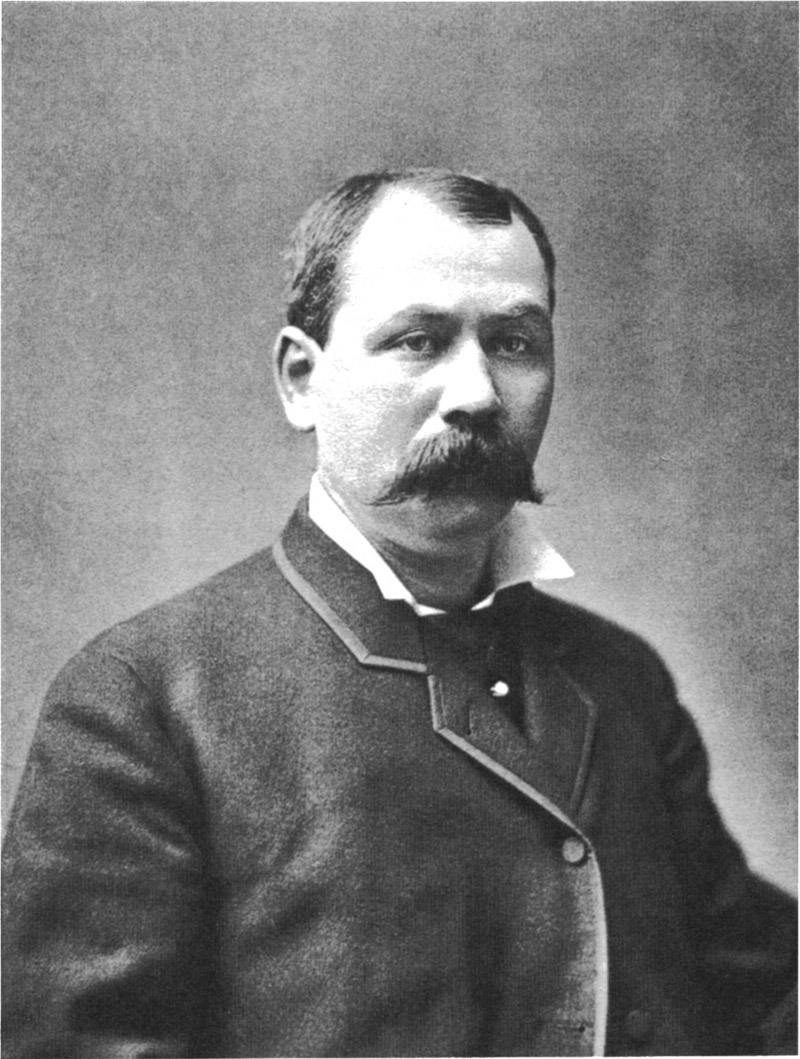
| Negative by Anderson, N. Y. | Heliotype Printing Co., Boston. |


An imprint of The Rowman & Littlefield Publishing Group, Inc.
4501 Forbes Blvd., Ste. 200
Lanham, MD 20706
www.rowman.com
Distributed by NATIONAL BOOK NETWORK
2019 edition published by The Rowman & Littlefield Publishing Group, Inc.
Foreword 2019 R. Scott Decker
All rights reserved. No part of this book may be reproduced in any form or by any electronic or mechanical means, including information storage and retrieval systems, without written permission from the publisher, except by a reviewer who may quote passages in a review.
British Library Cataloguing in Publication Information available
Library of Congress Cataloging-in-Publication Data available
ISBN 978-1-4930-4196-1 (hardcover)
ISBN 978-1-4930-4188-6 (e-book)
 The paper used in this publication meets the minimum requirements of American National Standard for Information SciencesPermanence of Paper for Printed Library Materials, ANSI/NISO Z39.48-1992.
The paper used in this publication meets the minimum requirements of American National Standard for Information SciencesPermanence of Paper for Printed Library Materials, ANSI/NISO Z39.48-1992.
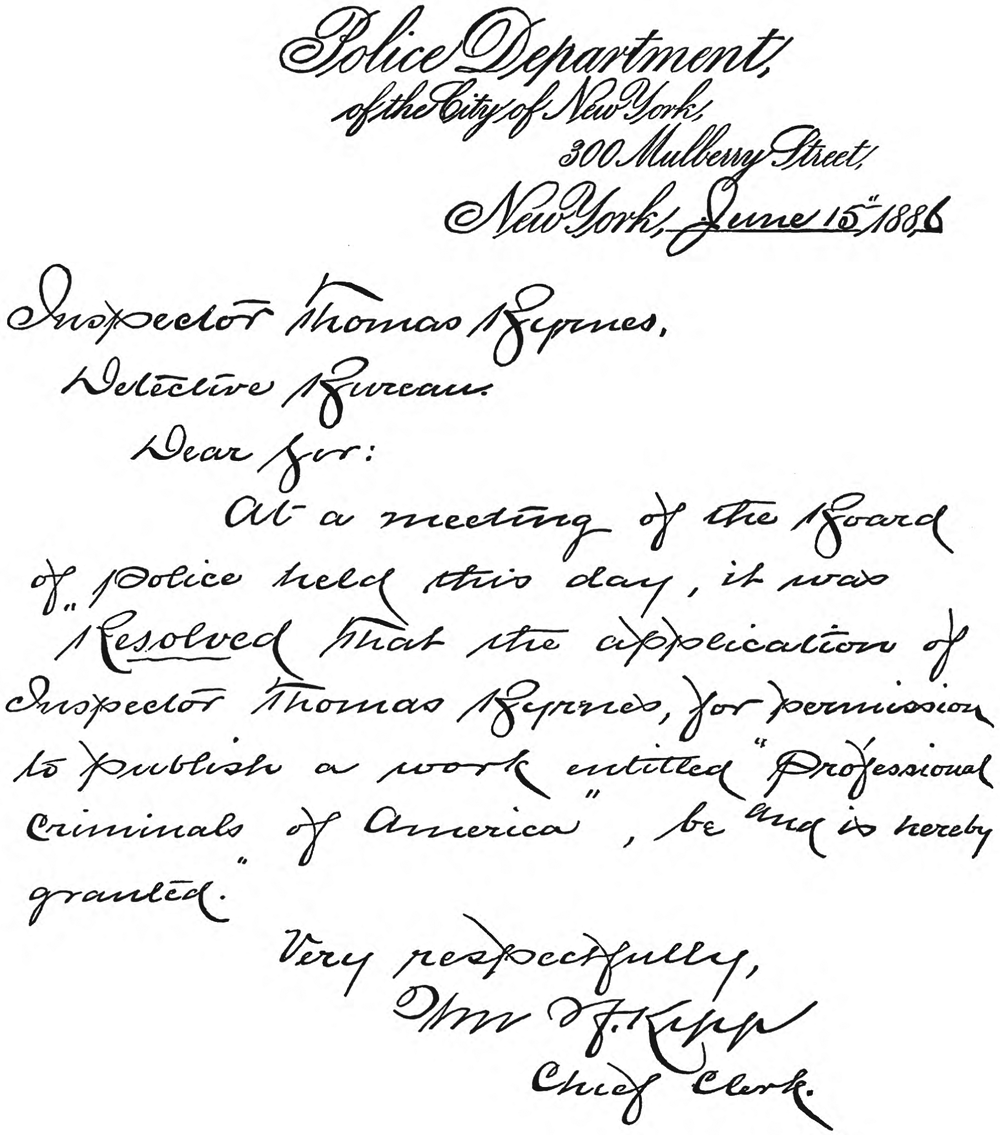
CONTENTS
Guide
T HEY were known by their street names: Gopher Bill, Young Hope and Old Hope, Banjo Pete, and Mollie Matches, alias John Larney. In the 1880s, as today, criminals avoided their given names. Thomas Byrnes, the legendary police detective, brings to light a part of our society that has been a constant as our country has matured and technology has evolved. Byrnes, who fought as a Union Zouave during the First Battle of Bull Run, was raised in New Yorks Five Points, which was considered the meanest tenement neighborhood of its day. Overcoming his sparse upbringing, Byrnes rose through the ranks of the New York City police from officer to inspector, then chief of detectives, and finally becoming police superintendent reporting to Commissioner, and future President of the United States, Theodore Roosevelt.
In Professional Criminals of America, Byrnes describes a hierarchy within the criminal world, one that carries over during incarcerationthe inevitable end for those who believe crime pays. In the first chapter, Bank Burglars, he draws a picture of the highest tier of criminal. Gopher Bill, Banjo Pete, and their nineteenth century counterparts possessed patience, intelligence, and mechanical knowledge. Coupling these traits with determination, Byrnes depicts a formidable adversary. He contrasts that with the attributes of a forger, who benefits from education, refined habits. And again with the highway robber, who requires brute force and nerve for success.
Byrness bank burglar is attuned to developments in lock construction. As a new invention comes to market, those adept will acquire an example and study it until completely familiar with the strong and weak points. Store and safe burglars, a step below the bank burglar, operate mostly on weekends when they can afford extra moments to discern the intricacies of a vault combination. Confidence and banco men are known for their industriousness and a good knowledge of human nature, and a fair amount of ingenuity. For them, success depends on accurately assessing their victims greed.





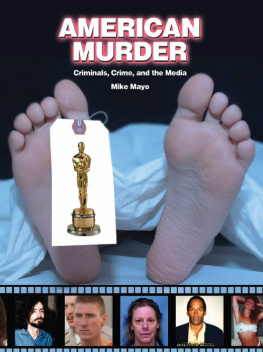
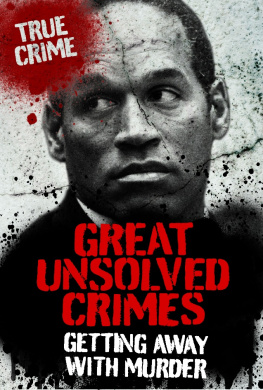


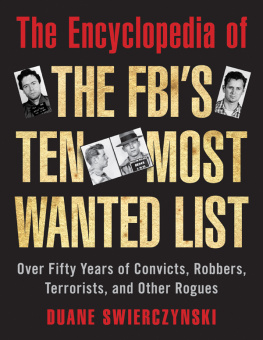





 The paper used in this publication meets the minimum requirements of American National Standard for Information SciencesPermanence of Paper for Printed Library Materials, ANSI/NISO Z39.48-1992.
The paper used in this publication meets the minimum requirements of American National Standard for Information SciencesPermanence of Paper for Printed Library Materials, ANSI/NISO Z39.48-1992.